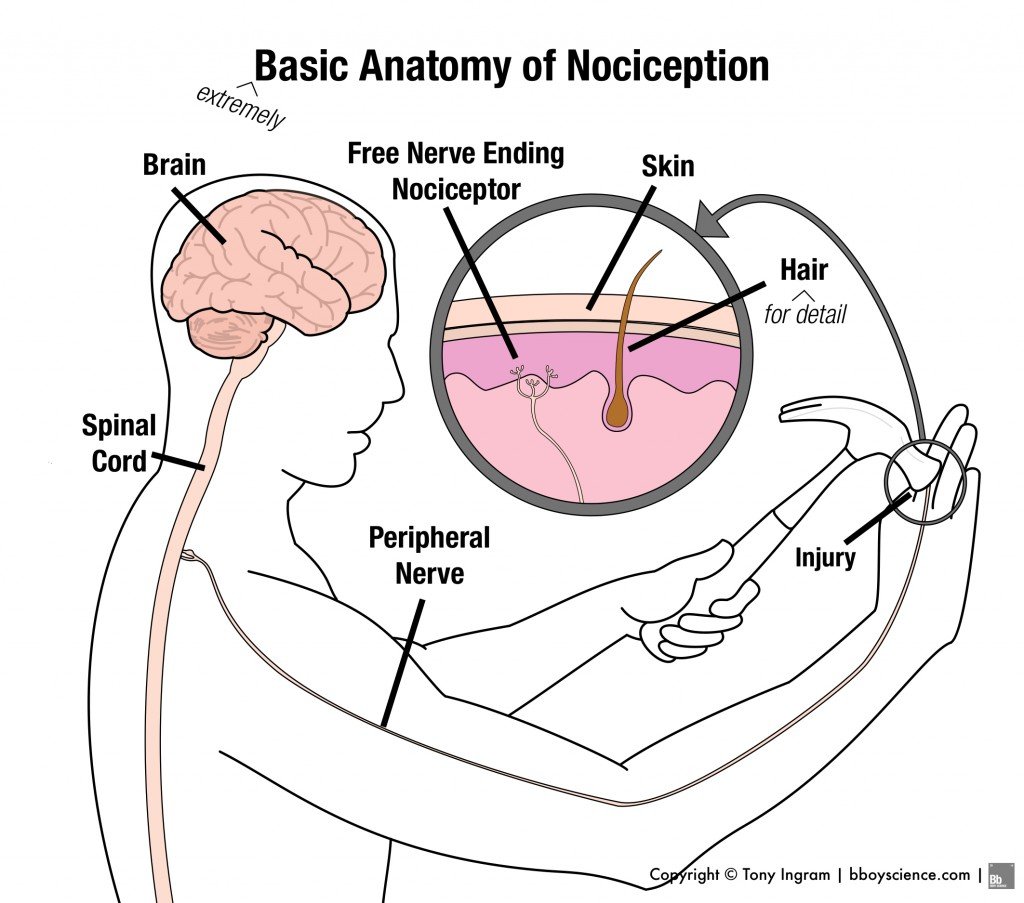
Pain: It comes in different variations, and as much as we'd like to avoid it, it's a part of life.
As tempting as a life without pain sounds, pain is actually very important and not feeling it isn't as fun as it may seem:
Pain is a warning signal to protect us - from further damage, and also from ourselves.
It makes us back away from danger, and acts as a reflex - for example by pulling your hand away from the hot oven.
So now imagine if you wouldn't experience any pain - you could touch something burning hot and just leave your hand there, causing more and more damage.
Or you could bite your own tongue while chewing - and keep going, because you didn't notice.
Or you could hurt your foot, but carry on working out and walking and making the injury a lot worse.
So as you can see, pain is important!
Pain in the Body
Pain is recognized by special nerve cells that sense when tissue is being damaged - these are called nociceptors.
They only fire when a certain pain threshold is being reached.
For example, gently laying your finger on the tip of a needle doesn't hurt. You can feel the needle, but those are just your general senses.
But when you push the needle further into your flesh, you reach the nociceptor threshold at some point - making you feel pain!
As soon as that has happened, your body sends special tuning chemicals to that area.
These tuning chemicals lower the pain threshold and as a result, that area of your body now hurts even more, even at the slightest touch that normally doesn't hurt.
You've experienced this with every bruise or cut - the reason for this effect is to warn against further damage.

Pain in the Brain
As soon as our nociceptors sense pain, they fire and send signals to our spinal cord.
There, the signal travels along the sensing pathway - this is like a highway that transports signals from the spinal cord to the brain in no time!
The sensing pathway ends in the cortex, an area of the brain that then decides how to act upon the pain signal.
Several different processes and systems are then being activated:

One of the brain's first responses is to activate the motor pathways, and making you back away from danger.
This is the reflex of pulling your hand back from touching a hot or painful surface!
Also, our attention gets directed to the area of pain.
This is due to the salience network - a system of interconnected brain cells. We are very selective with our attention, but since pain is almost always a warning for something dangerous, our whole attention immediately turns to that area.
This is also why you can distract an itch or lower pain with more pain: your body will generally pay more attention to the area with more pain, making you forget other sensations more.
Then, to cope with the pain, the brain activates modulation networks that release endorphins and enkephalins - hormones that help us regulate and reduce the pain, making us feel better and calmer, and helping us to cope with the situation.
All of these processes work together to create the experience of pain, prevent further damage, and help us deal with it.
The theory behind it is the same for every human, but the perception of pain as well as the sensitivity and initial threshold vary a lot from person to person.
The future of pain medication
Normally, pain medications are created so that they can help the largest number of people.
But since pain is so different for everyone, there's always someone who experiences side effect or for whom the medication doesn't work.
This is especially bad for people with chronic pain, that have tried every conventional method but nothing seems to work.
Now, scientists are working on new treatments that block certain pain-sensing attention networks , and tailor them to individual patients!
This can be done for example by mapping brain pathways with magnetic resonance imaging.
This personalized medicine could revolutionize our future - and maybe take us a step closer to a world where we can still benefit from the protection of pain, but also stop it if we don't want to cope with it anymore!
Images: 1, 2, 3, Sources: 1, 2, 3, 4, 5, 6
- Instagram -

© Sirwinchester

